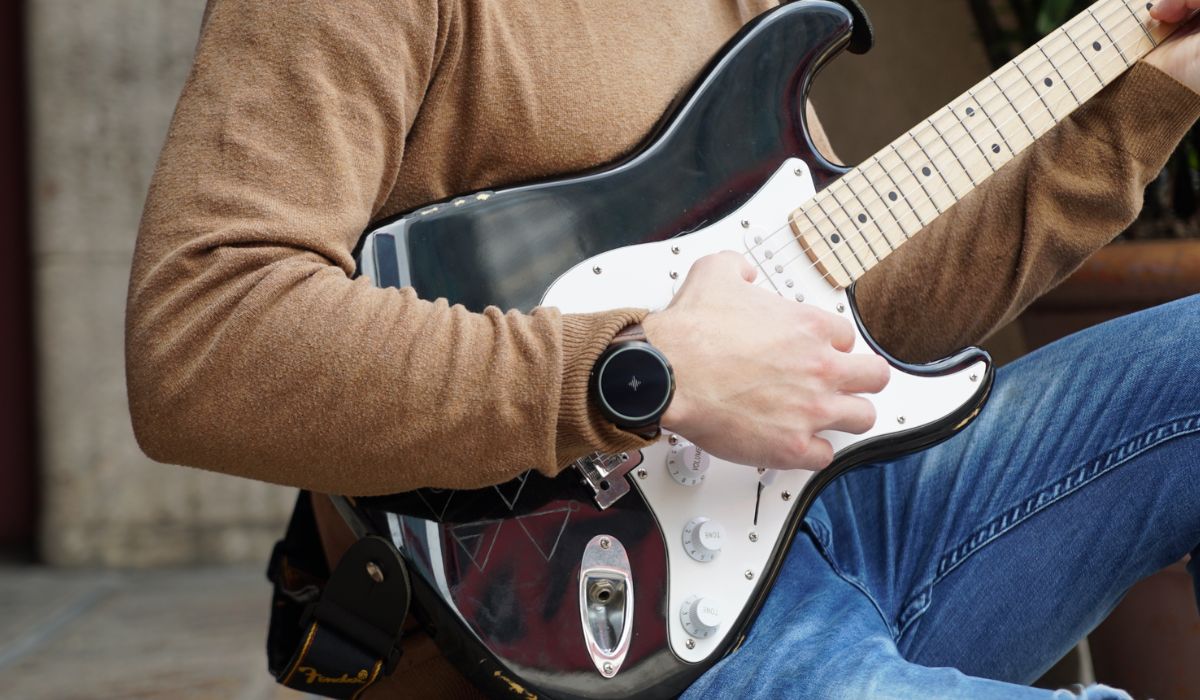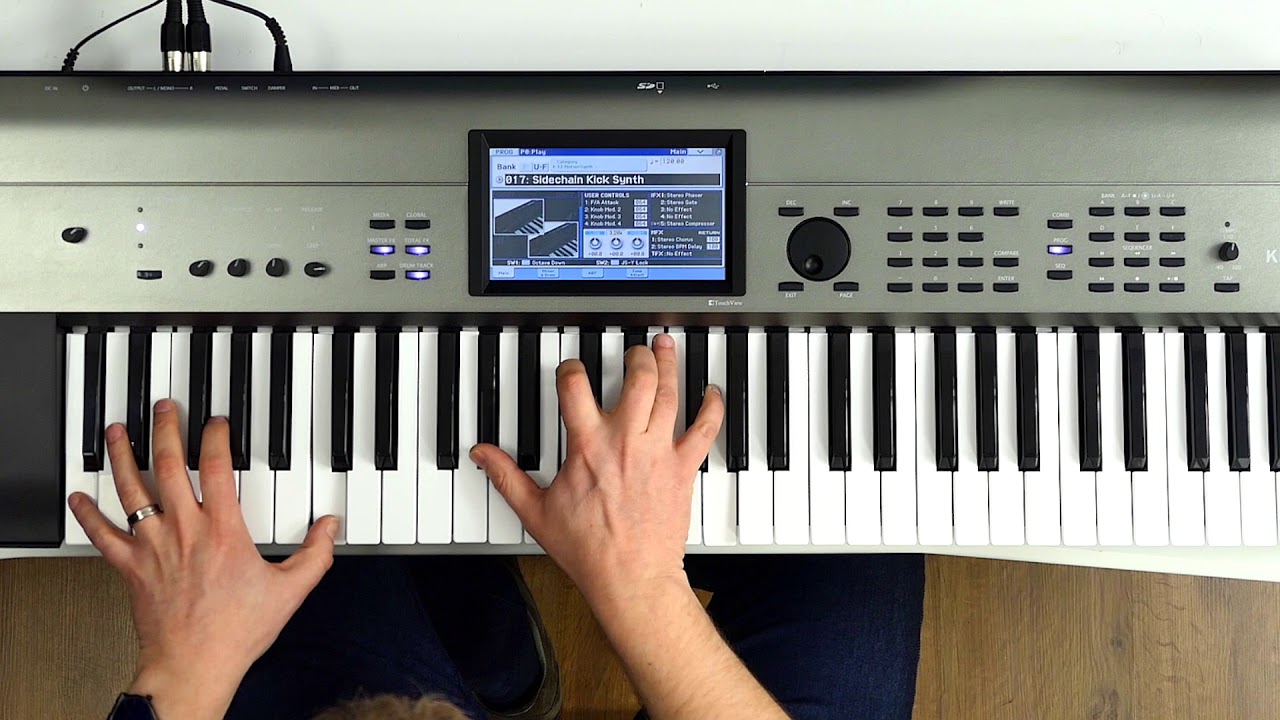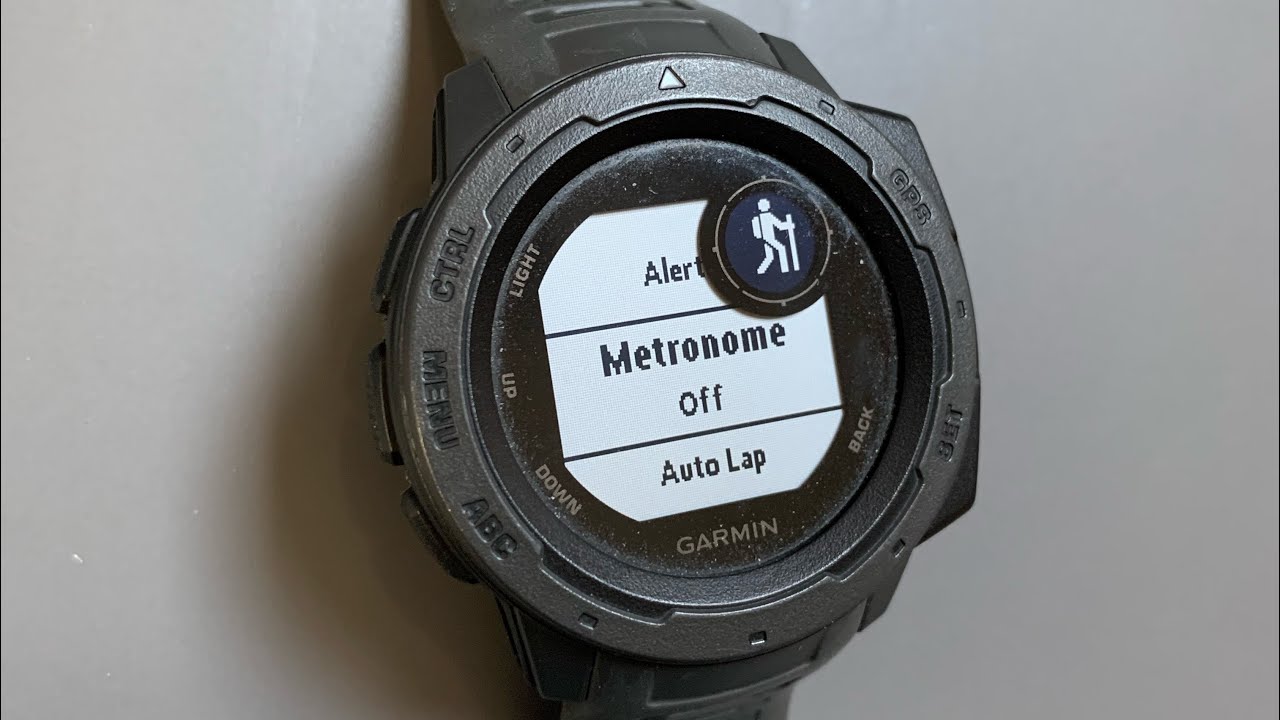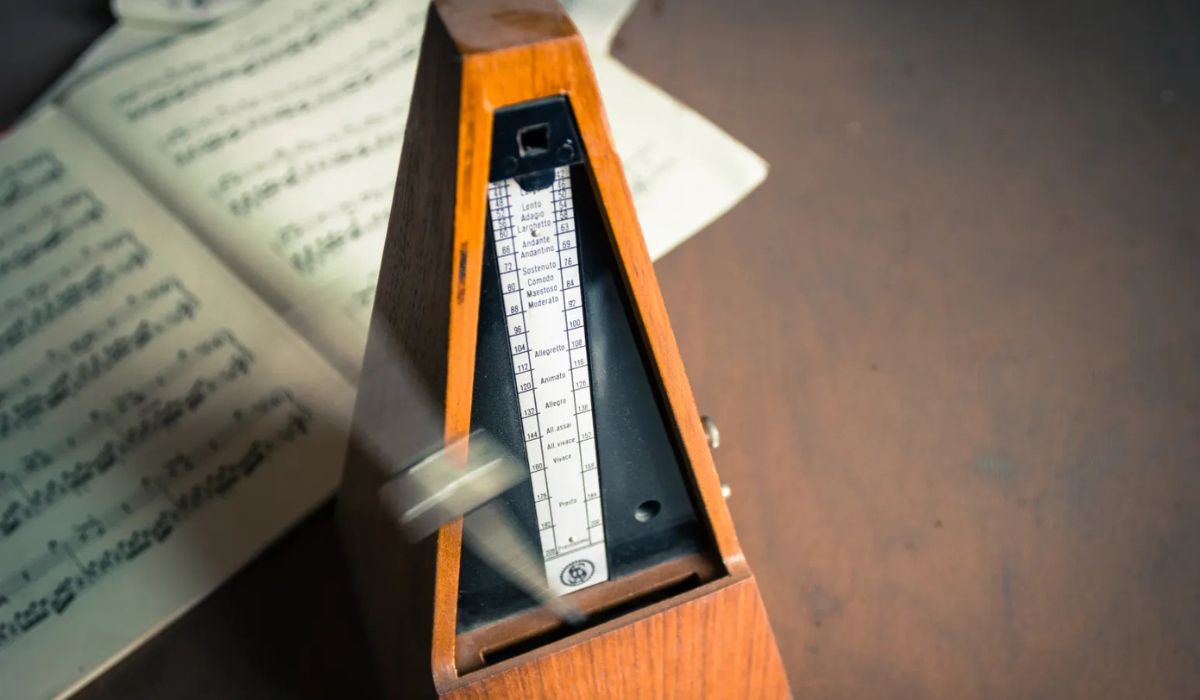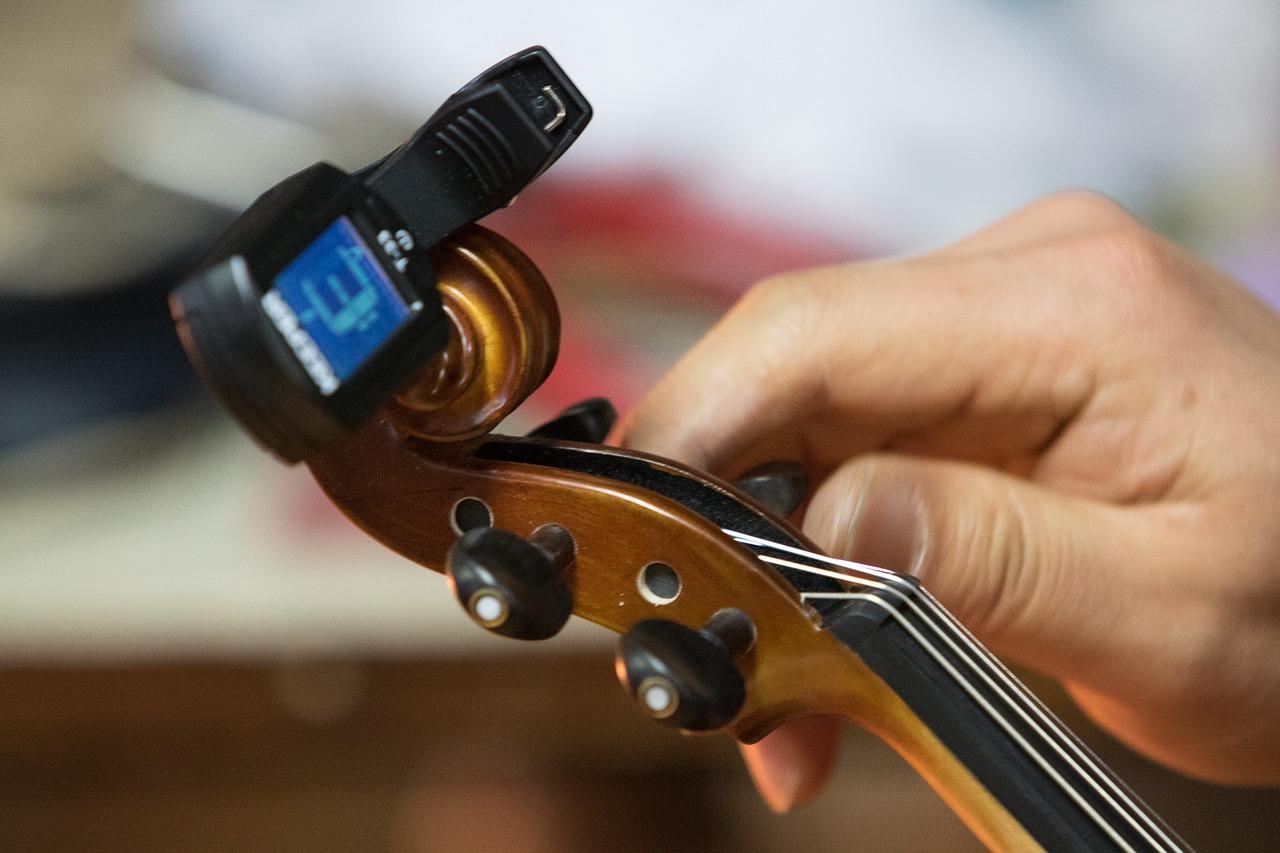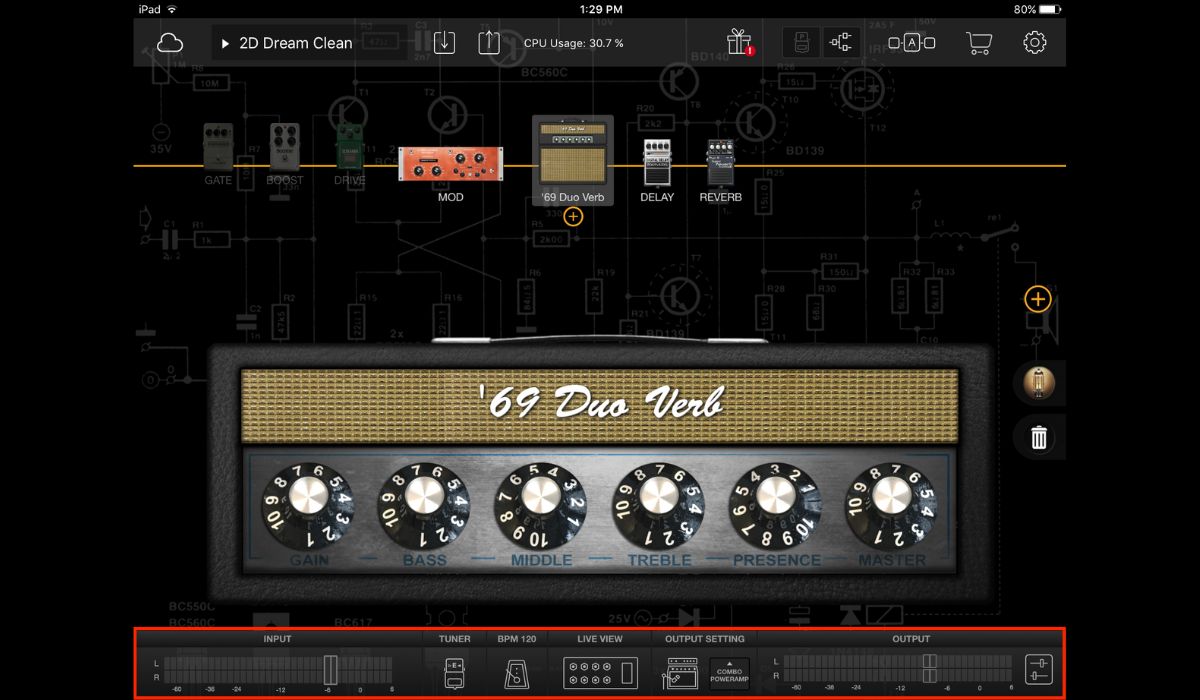Home>Instruments>Guitar>How To Use A Metronome For Guitar


Guitar
How To Use A Metronome For Guitar
Published: February 14, 2024
Learn how to use a metronome for guitar to improve your timing and rhythm. Master the art of playing guitar with precision and accuracy.
(Many of the links in this article redirect to a specific reviewed product. Your purchase of these products through affiliate links helps to generate commission for AudioLover.com, at no extra cost. Learn more)
Table of Contents
Introduction
Playing the guitar is a rewarding and enriching experience, but mastering this instrument requires dedication, practice, and a keen sense of rhythm. One tool that can significantly enhance your rhythmic precision and overall playing ability is the metronome. Whether you're a beginner or an experienced guitarist, integrating a metronome into your practice routine can yield remarkable results.
In this comprehensive guide, we will delve into the art of using a metronome to elevate your guitar playing. From understanding the basics of a metronome to incorporating various techniques, this article will equip you with the knowledge and insights needed to harness the full potential of this invaluable practice aid.
The metronome serves as a steadfast timekeeper, allowing you to develop a strong internal sense of rhythm and timing. It provides a steady beat, enabling you to practice scales, chords, and complex musical passages at a consistent tempo. As you embark on this journey to refine your guitar skills, the metronome will be your unwavering companion, guiding you towards precision and musical proficiency.
So, whether you aspire to strum along to your favorite songs, compose original music, or perform on stage, the guidance offered here will empower you to harness the power of the metronome and take your guitar playing to new heights. Let's embark on this rhythmic adventure and unlock the potential of the metronome as a transformative tool in your musical journey.
Understanding the Basics of a Metronome
Before delving into the practical aspects of using a metronome for guitar practice, it’s essential to grasp the fundamental workings of this invaluable tool. At its core, a metronome is a device that produces regular ticks or beats at an adjustable tempo, serving as a reliable guide for maintaining consistent timing and rhythm during musical performances and practice sessions.
Metronomes are available in various forms, including traditional pendulum metronomes, digital metronomes, and metronome apps. Each type offers unique features and benefits, catering to the diverse needs and preferences of guitarists and musicians. While traditional metronomes exude a classic charm and visual appeal with their swinging pendulums, digital metronomes and apps provide versatility and advanced functionalities, such as different sound options, customizable time signatures, and tempo presets.
Understanding the components of a metronome is crucial for harnessing its full potential. The tempo setting allows you to adjust the speed of the beats, typically measured in beats per minute (BPM). This feature enables you to practice at varying tempos, gradually increasing the speed as your proficiency improves. Additionally, some metronomes offer accent settings, allowing certain beats to be emphasized, which is particularly useful for complex rhythms and time signatures.
Furthermore, comprehending time signatures is integral to utilizing a metronome effectively. Time signatures, such as 4/4, 3/4, and 6/8, dictate the number of beats in each measure and the type of note that receives the primary emphasis. By aligning the metronome’s beats with the appropriate time signature, you can develop a nuanced understanding of rhythmic patterns and enhance your ability to play in diverse musical contexts.
As we navigate through the intricacies of using a metronome for guitar practice, this foundational knowledge will serve as a springboard for leveraging the metronome’s capabilities to refine your timing, precision, and musical expression.
Setting Up Your Metronome for Guitar Practice
As you embark on your guitar practice journey with a metronome, the initial step involves setting it up to align with your practice goals and musical preferences. Whether you opt for a traditional metronome, a digital device, or a user-friendly app, the process of configuring the metronome remains consistent, albeit with varying interfaces and functionalities.
First and foremost, acquaint yourself with the tempo settings of your metronome. The tempo, measured in beats per minute (BPM), dictates the speed at which the metronome will produce clicks or beats. For beginners, commencing at a moderate tempo, such as 60 BPM, can provide a steady foundation for practicing basic chord transitions, scales, and simple melodies. As your proficiency advances, gradually increasing the tempo will nurture your ability to play with heightened dexterity and control.
Additionally, familiarize yourself with the time signature settings on your metronome. Time signatures, such as 4/4 (common time), 3/4 (waltz time), and 6/8, influence the rhythmic structure of musical compositions. By configuring the metronome to correspond with the designated time signature of a particular piece or exercise, you can internalize the rhythmic nuances and execute musical passages with enhanced precision.
Furthermore, some metronomes offer accent settings, enabling you to emphasize specific beats within a measure. This feature is particularly advantageous when practicing intricate rhythms or syncopated patterns, as it cultivates a heightened awareness of rhythmic accents and syncopation, essential elements in various musical genres, including jazz, Latin, and funk.
For guitarists seeking versatility and convenience, digital metronomes and metronome apps present an array of customizable features, such as different sound options, visual indicators, and programmable presets. These modern iterations of the metronome provide flexibility in tailoring the auditory and visual cues to suit individual preferences, thus enriching the practice experience and fostering musical growth.
By adeptly configuring your metronome to harmonize with your musical endeavors, you lay a robust foundation for purposeful and effective guitar practice, harnessing the metronome’s rhythmic guidance to elevate your playing to new heights.
Using the Metronome to Improve Your Timing
When it comes to refining your guitar playing, impeccable timing is a cornerstone of musical proficiency. The metronome serves as an invaluable ally in honing your sense of rhythm and temporal accuracy, nurturing a seamless cohesion between your musical expressions and the rhythmic framework of a composition.
Integrating the metronome into your practice routine cultivates a disciplined approach to timing, fostering a deep-seated awareness of tempo fluctuations and rhythmic subdivisions. Whether you’re practicing scales, arpeggios, or intricate solos, the metronome instills a sense of accountability, compelling you to align your playing with unwavering precision.
One of the most effective strategies for utilizing the metronome to enhance your timing is to start at a comfortable tempo and gradually increase the speed as you attain mastery. This progressive approach not only fortifies your technical prowess but also instills a profound understanding of tempo transitions, preparing you to navigate diverse musical contexts with confidence and fluency.
Moreover, the metronome empowers you to internalize complex rhythmic patterns and syncopated accents, fostering a nuanced grasp of rhythmic intricacies prevalent in various musical genres. By synchronizing your playing with the metronome’s steady pulse, you develop an intuitive sense of groove and rhythmic stability, essential attributes for captivating and dynamic musical performances.
Furthermore, the metronome serves as a reliable tool for rectifying timing inconsistencies and irregularities in your playing. By identifying sections of a piece where timing falters, you can meticulously isolate and address these areas, gradually refining your rhythmic execution and imbuing your playing with a compelling sense of rhythmic assurance.
As you embark on this rhythmic odyssey with the metronome as your guiding beacon, embrace each practice session as an opportunity to elevate your timing, precision, and musical fluency. With unwavering dedication and the metronome as your steadfast companion, you’ll embark on a transformative journey toward rhythmic mastery, enriching your guitar playing with a captivating sense of rhythmic finesse and expressive vitality.
Incorporating Different Techniques with the Metronome
As you delve into the realm of guitar playing, the metronome emerges as an indispensable ally in refining a diverse array of techniques, fostering precision, dexterity, and rhythmic acuity across various facets of your musical repertoire. Whether you’re honing your strumming patterns, perfecting intricate fingerstyle arrangements, or mastering blistering guitar solos, the metronome serves as an unwavering guide, propelling your technical proficiency to new heights.
When embarking on the journey to master intricate techniques such as alternate picking, the metronome assumes a pivotal role in cultivating flawless execution. By synchronizing your picking hand with the metronome’s steady beats, you instill a disciplined and consistent approach to your playing, gradually enhancing your speed, accuracy, and control. As you incrementally elevate the tempo, the metronome becomes an invaluable gauge of your technical progress, propelling you toward heightened fluency and precision.
For guitarists venturing into the realm of fingerstyle playing, the metronome serves as a steadfast companion in refining intricate fingerpicking patterns and fostering seamless coordination between the thumb and fingers. By aligning your finger movements with the metronome’s rhythmic pulse, you cultivate a profound sense of finger independence and rhythmic fluidity, laying the groundwork for captivating and expressive fingerstyle performances.
Furthermore, when navigating the realm of improvisation and soloing, the metronome functions as an invaluable tool for nurturing rhythmic ingenuity and melodic fluency. By practicing scales, licks, and improvisational phrases in tandem with the metronome, you internalize rhythmic subdivisions and develop an innate sense of phrasing, enabling you to weave captivating musical narratives with rhythmic finesse and expressive dynamism.
Additionally, the metronome facilitates the mastery of complex rhythmic techniques, such as polyrhythms and odd time signatures, by providing a stable rhythmic framework for experimentation and refinement. By juxtaposing intricate rhythmic patterns with the metronome’s beats, you unravel the complexities of rhythmic interplay, enhancing your ability to navigate diverse rhythmic landscapes with confidence and artistry.
Embrace the metronome as your steadfast companion in the pursuit of technical mastery, infusing your practice sessions with purpose and precision as you embark on a transformative journey toward rhythmic fluency and expressive prowess across diverse guitar techniques.
Conclusion
Embarking on a rhythmic odyssey with the metronome as your steadfast companion heralds a transformative journey toward elevating your guitar playing to unprecedented heights of precision, rhythmic finesse, and expressive vitality. By integrating the metronome into your practice regimen, you have embarked on a quest to cultivate an unwavering sense of timing, technical proficiency, and rhythmic acuity, transcending musical boundaries and enriching your playing with captivating dynamism.
As you navigate the intricacies of guitar practice with the metronome as your guiding beacon, you embark on a multifaceted exploration of rhythmic mastery, honing your sense of timing across diverse musical contexts and techniques. From refining your chord transitions and scale exercises to mastering intricate fingerstyle arrangements and blistering guitar solos, the metronome serves as an unwavering ally, propelling your technical prowess to new realms of fluency and control.
Moreover, the metronome empowers you to internalize complex rhythmic patterns, synchronize your playing with unwavering precision, and infuse your musical expressions with a compelling sense of rhythmic assurance. As you harness the metronome’s rhythmic guidance, you cultivate an intuitive sense of groove and rhythmic stability, essential attributes for captivating and dynamic musical performances across diverse genres and musical endeavors.
Furthermore, the metronome serves as a catalyst for technical refinement, nurturing flawless execution of intricate techniques such as alternate picking, fingerstyle playing, and improvisational fluency. By aligning your musical endeavors with the metronome’s rhythmic pulse, you embark on a transformative journey toward rhythmic fluency and expressive prowess, transcending musical boundaries and enriching your guitar playing with a captivating sense of rhythmic finesse and expressive vitality.
In conclusion, the metronome stands as an indispensable tool in your quest for rhythmic mastery, propelling your guitar playing to new realms of precision, technical fluency, and expressive vitality. As you continue to infuse your practice sessions with purpose and precision, embracing the metronome as your unwavering ally, you are poised to embark on a transformative journey toward rhythmic fluency and expressive prowess, enriching your musical journey with a captivating sense of rhythmic finesse and dynamic vitality.

